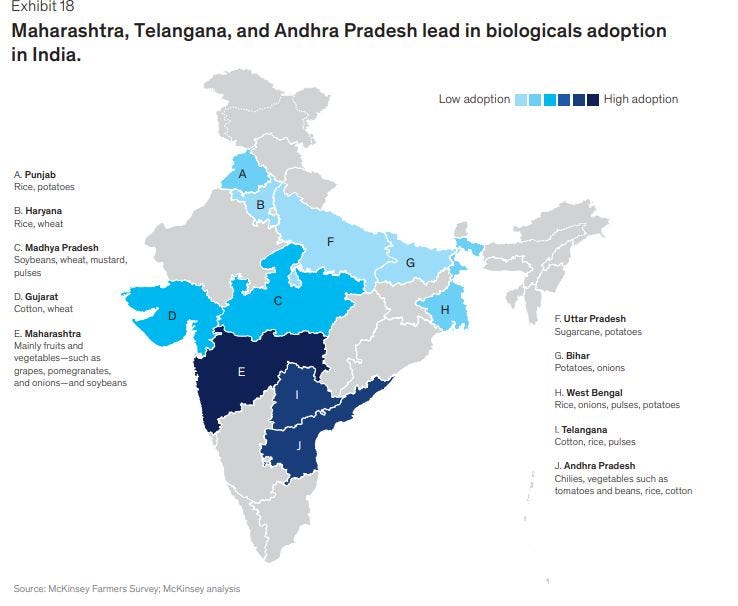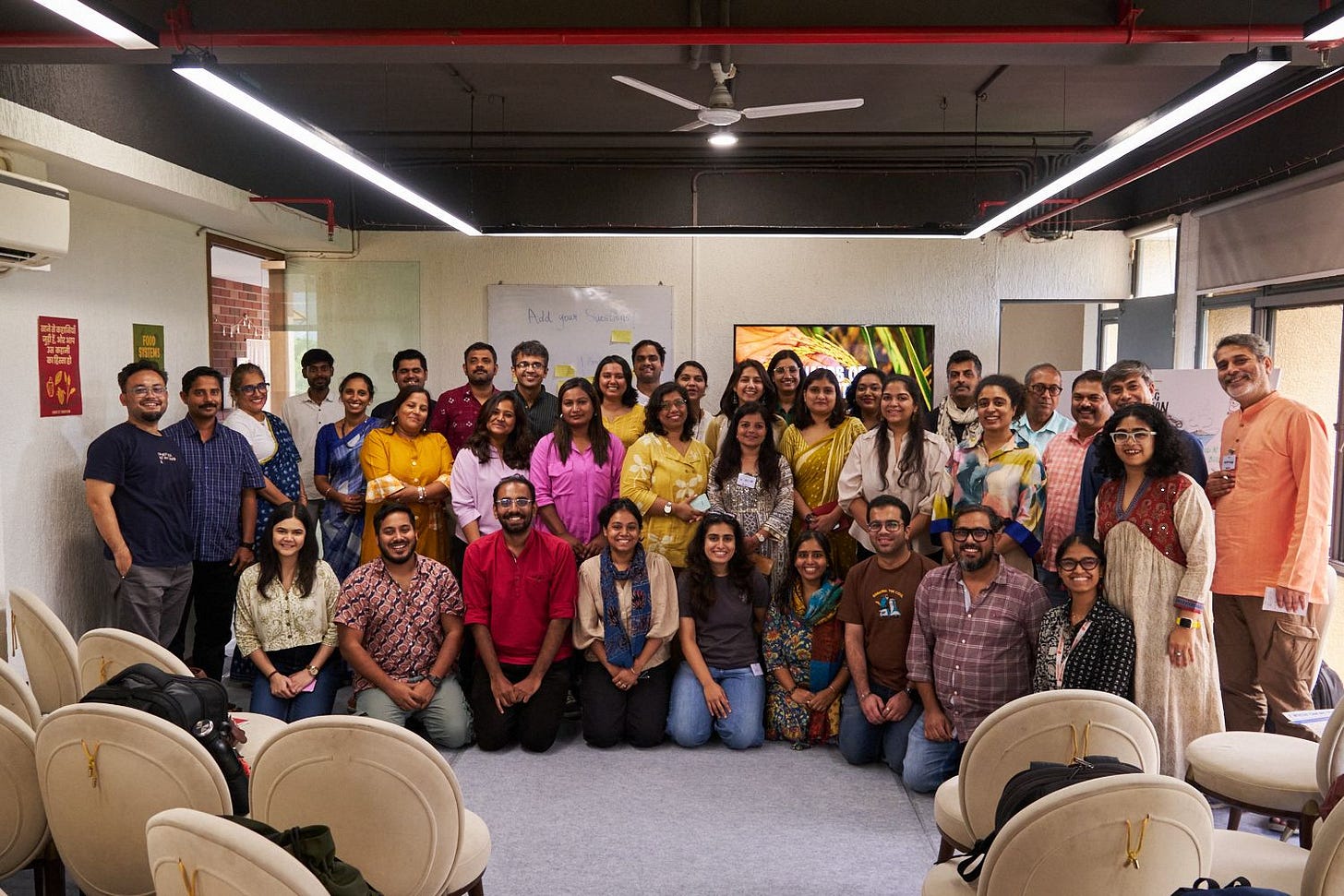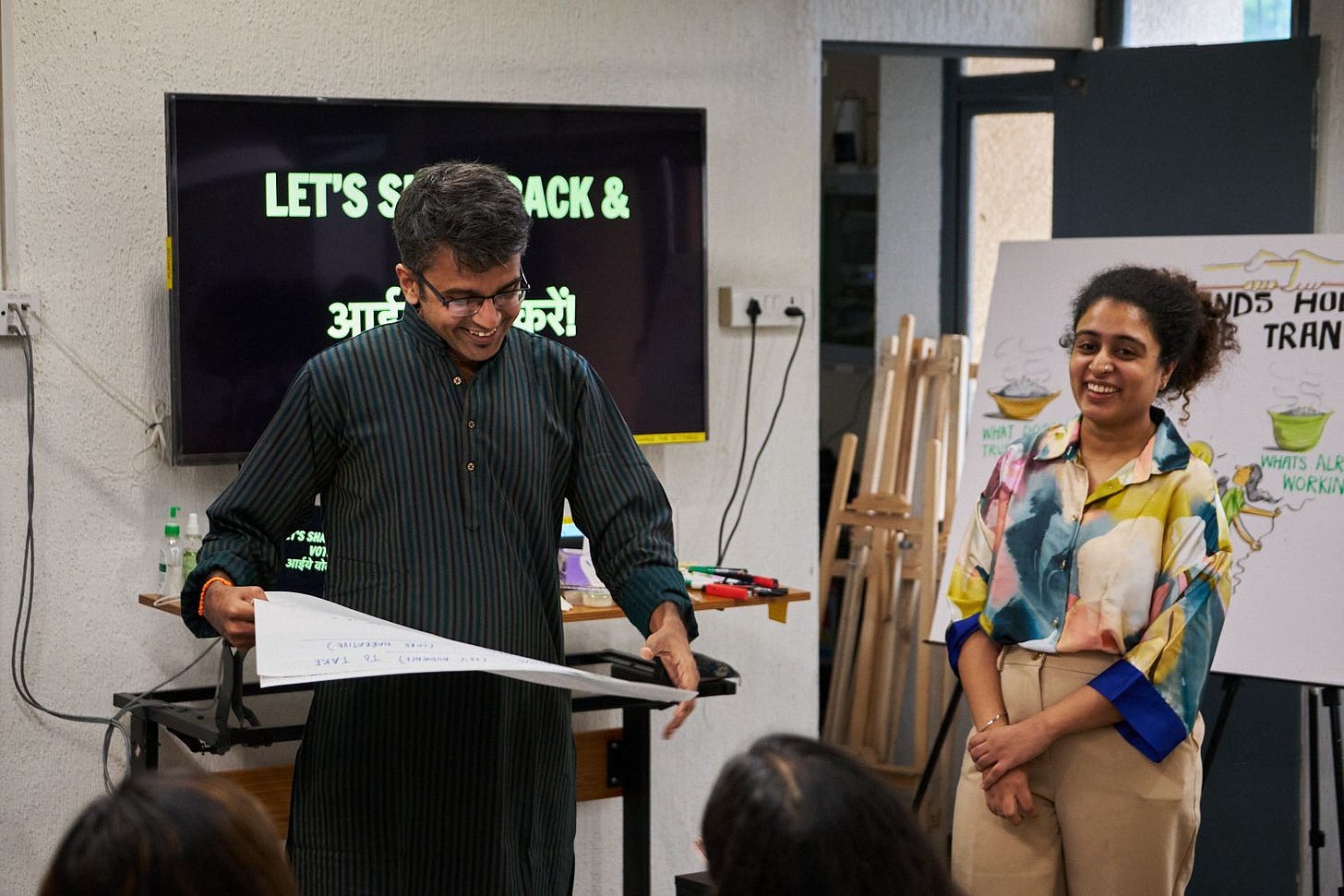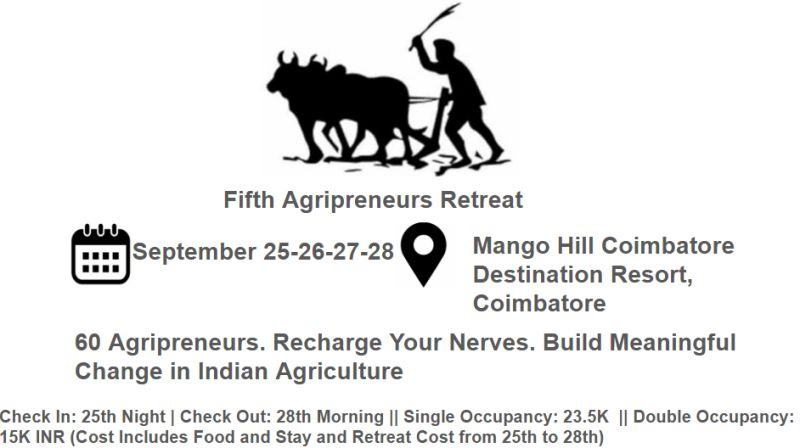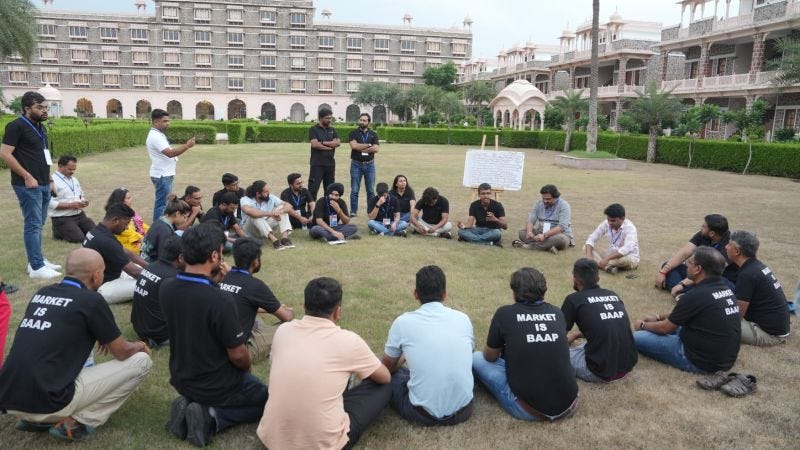Sunday Reflections (FMC, Microplastics, Biostimulant Regulatory Paralysis, Narratives of Transition)
Dear Friends,
Greetings from Hyderabad, India. My name is Venky. Welcome to Sunday Reflections where I reflect on what I’ve written and ask myself, In doing what I am doing, what am I really doing?
Subscriber-Only Plugins
Why did FMC shut down its operations?
Indian Agrochemical industry is going through a massive churn with destocking and market slowdown triggering massive reorganization within. From my ground sources, I am hearing the ascent of corporate distributor led models across the country. The biostimulants regulatory paralysis has also affected the agrochemicals industry with Syngenta also supposedly reconsidering its India investment.
More about FMC and digging into the reasons behind its shut down in a recent edition of Agribusiness Matters.
State of Bioenergy with Mateen and Ashwin
State of Bioenergy with Mateen Abdul and Ashwin Savé
These are heady times for the Indian bioenergy sector, riding on Indian Government’s mandate. CBG players like Gruner Renewable Energy have seen their revenues jump 40X.
Maize craze is currently gripping India as we speak, thanks to ethanol demand spiking off the charts to meet 27% blending target by 2030. How to understand the potential of bioenergy sector? What can biofuel sector learn from the evolution of the automotive sector?
Can bioenergy ride the scaling wave amidst ongoing fodder crisis in India? India has approximately 1,108TWh of biogas potential, according to an analysis conducted by World Biogas Association. What is the potential for biohydrogen in India? What are its scaling levers?
How do we transcend messy food vs fuel debates ?
You can check out the podcast here. The first thirty minutes is available for everyone.
Protected Cultivation’s Achilles Heel: Microplastics
If sustainability-conscious Europe has massive adoption of plastic mulch films (over 720 kt/yr of agriculture plastics is used) , should India be left behind? Or are we better off if we are left behind?
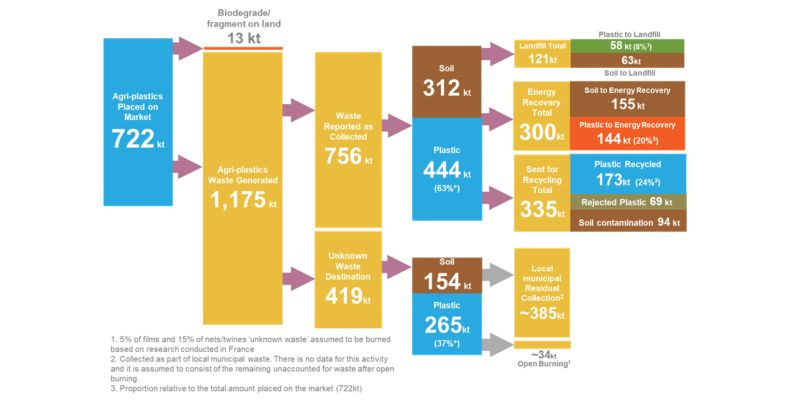
There are more evidences now emerging that microplastics particles in mulching sheet is messing up photosynthesis.
If this is the case, I see massive tracts of Indian farm lands (in ‘progressive’ states such as Maharashtra) that will get badly affected because of this once the results show up in soil degradation.
Research shows that microplastic particles in soil and water reduce plants' ability to convert sunlight to energy by 7-12% and decrease the green pigment plants need for this process by 11-13%.
The conventional mulch film is made of low-density polyethylene (LDPE). From my ground sources, I hear that plastic mulch is preferred for the shiny light it creates from reflection which deters pests, although it deprives the roots of air, stunts root growth and makes the soil hard like a rock.
Natural Crop Residue Mulching costs more (6K -7K per acre as per one estimate) as it involves more labor and time, although it reduces water needs. Farmers prefer plastic mulch as an alternative to having a greenhouse, but cheaper. I mean think about it: If soil needs sunlight and air, wouldn’t plastic suffocate it? When plant draws more nutrients from the air than from the soi, isn’t this obvious?
But here is the thing.
Mulch sheet has "progressive" vibe attached to it. It makes your farm “CLEAN”. Whenever I drive down from Hyderabad to Pune, I see plenty of mulching sheets in farms in "progressive" high income districts.
But is it worth paying that price? IF EU uses 80,000 tonnes of mulch films, can you imagine the thousands of tonnes of plastic debris potentially left in European soils each year? Is India also headed towards the same path?
More about Microplastics, the Protected Cultivation’s Achilles Heel in a recent edition of Agribusiness Matters.
India’s Biostimulant Sector Faces Regulatory Cholesterol
A silent battle is brewing between informal India (often called as Bharat) and formal India.
Whether it is in the domain of taxation or agriculture or sand mining or F&V trading, this battle is quietly shaping the future of Indian governance.
You wouldn’t hear about it unless you have your ears and feet on the ground.
Take the case of herbicide-tolerant genetically modified Cotton.
Technically, it is banned and illegal. But its informal sales has grabbed almost half of the entire India’s 3600 crore cotton seeds market (if you pay attention to the ground sources) in several states including Maharashtra.
Cotton farmers are happily growing them (while few are moving away from cotton, transitioning towards oil seeds and maize and tobacco) and the regulatory authority is pretending as if they are not watching.
Here is where things get interesting.
Unlike HTBtCotton, in the case of the biostimulant sector, the situation is the complete opposite: Informal use has made regulators visit biostimulant manufacturers’ factories ‘to make friendly connections’ (read as bribes), and in adverse circumstances, do witch hunting and legal bullying thanks to the ongoing regulatory paralysis.
As India celebrates her 79th Independence day, addressing the fundamental tension between Formal India and Informal India is critical. I have taken the first step to write about it in detail and look at few ways to address it. I hope this reaches where it has to.
More about Biostimulant Regulatory Paralysis in a recent edition of Agribusiness Matters.
Hands of Transition Narrative Cocreation
I had fun being part of Hands of Transition narrative workshop in Delhi last week with India's leading communicators, artists, journalists, influencers, grassroots groups working on food and agriculture systems.
The workshop explored an important question: How do we build the right narrative that can spark action and bring transformation in food and agriculture systems?
The question of narratives and how to build a pan-India networked hub of communicators working with farmers and other key players in the food and agriculture systems deeply energize me.
The workshop left with me a stronger impetus to rethink the role of narratives in an age of metacrisis and climate emergency in transitioning food and agriculture systems that work for farmers, consumers and the planet.
In today's AI-fueled-instagrammed reel age where people are getting deeply wedded and entrenched in their own narrative bubbles, it becomes extremely important to examine how narrative building is quietly happening through memes, reels and other cultural markers that exert extreme power over us.
How do we examine the deeper beliefs that have shaped cultural narrative wars in agriculture? There is so much to dig deeper into this topic, especially from the lens of complexity and systems thinking.
Having been a fan of The Locavore and Regenerative Bihar, it was lovely to meet and interact with the passionate gentlemen behind the two, Thomas Zacharias and Ishteyaque Ahmad ji.
Arjun Swaminathan shared fascinating insights on how social sector impact showcase films have become so boring and why we have to bring fresh narrative energy to rethink how we tell stories of impact.
Bhamini Jain and Shashwat Shukla shared fascinating insights on their research on fertilizers and how farmers consider Green Revolution as mother figure who shall not be questioned.
Ishteyaque Ahmad shared fascinating insights on what the makaana snack boom is doing to farmers in Bihar.
illiyas KP shared fascinating insights on the state of agriculture in Kerala.
I delved into the narratives around the role of energy transition in agriculture and explored the questions I have been grappling in the context of food vs fuel debates, especially in the light of solarization of agriculture and ethanol blending.
How can I forget Indrajit Sinha and Lakshmi who created powerful visual summaries of our conversations?
Special thanks to Malvika M Harpreet Bagga Gurpriya S. Komal Chaudhry and the team from Purpose for their lovely hospitality and the thoughtful design that went behind the workshop, especially in the food that was served for the workshop.
This was one of those rare workshops where the food that was served aligned with the theme of the workshop. There was an incredible curation of food from various parts of the country which fueled a different passionate energy to focus harder on narratives that can save this incredible food diversity India is blessed with. We cannot take it for granted!
Why do we host Agripreneur Retreats?
We want to create a space for founders to share their struggles, victories, angst and concerns in chasing moonshot goals in Indian Agriculture.
Agripreneur Retreats are the antithesis of a networking event - No power plays and status games. Everyone sits in a circle and we exchange our real human selves.
We exchange gossip, notes, insights, learnings, reflections, agony and what not.
And in that process, somewhere we touch a deep chord that reminds us that we "cranks" are not alone- somewhere there is also another entrepreneur out there wildly mad enough to tackle bigger problems, deeply passionate about improving the livelihoods of farmers, deeply committed to playing the long game.
You will get an opportunity to build meaningful relationships and be part of the agripreneurs community tribe who have experienced the magic of our agripreneur retreats.
Whenever people complain about agritech, I tell them to come to these agripreneurs meet and get their perspectives challenged, their assumptions unpacked!
You can register for the Fifth Agripreneurs Retreat here
The Death of Gramhal
I've been a supporter of Gramhal and have had the opportunity to interact with Vikas Birhma and Achint Sanghi closely.
Vikas and their team did interesting innovation on mandi price parchis (receipts) and attempted to build a data cooperative. This is a great asset that could be taken forward by any risk taking entrepreneurs in the Agripreneurs community. This is exactly the risk capital that bold VCs should have funded. Anyways, hope such models don't die premature death.
After their data parchis took over, Jabalpur mandi issued diktat against farmers using their Bol Bhav. In short, these guys attempted to create a disruption in the mandi power structures. I hope such models are supported by bold venture capitalists. I am confident the founders would come back with a for-profit identity.
So, what do you think?
How happy are you with today’s edition? I would love to get your candid feedback. Your feedback will be anonymous. Two questions. 1 Minute. Thanks.🙏
💗 If you like “Agribusiness Matters”, please click on Like at the bottom and share it with your friend.



